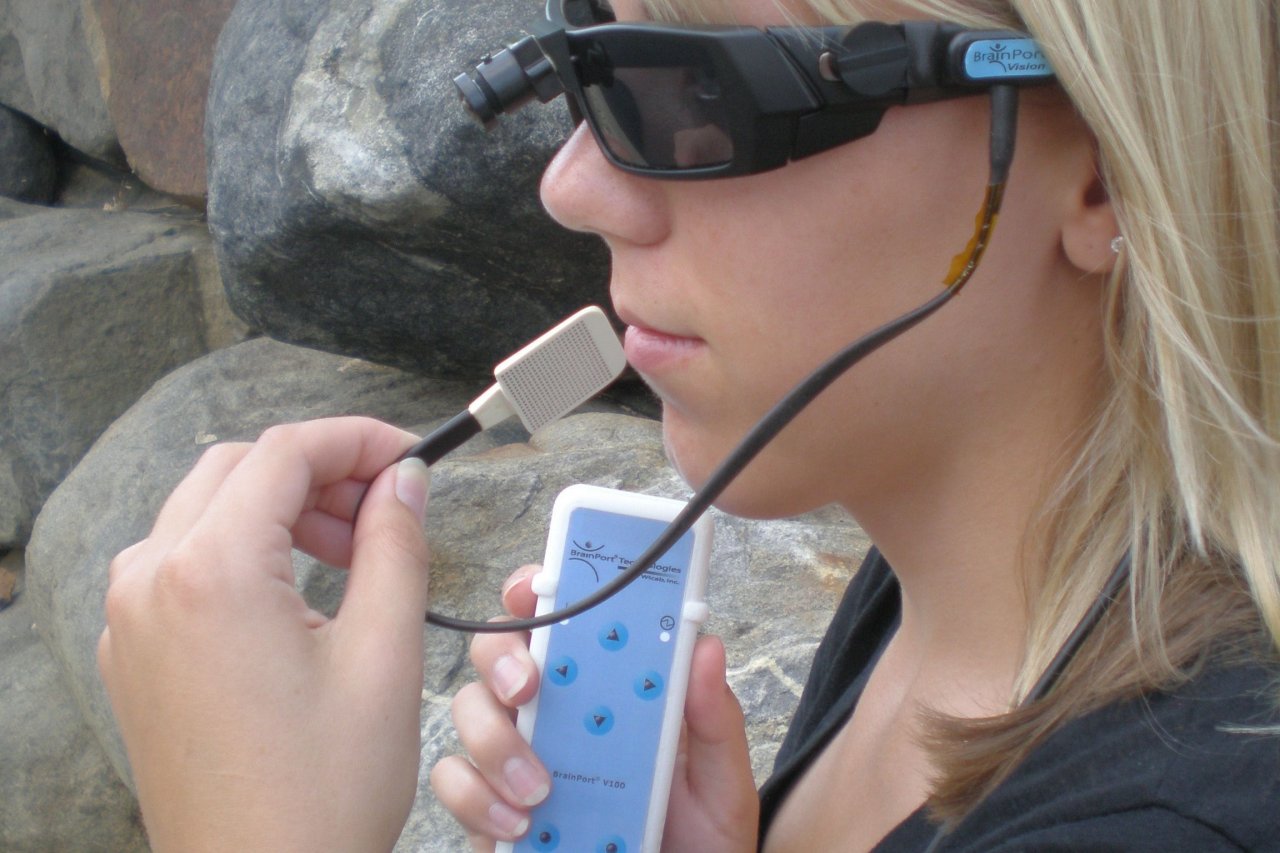The U.S. Food and Drug Administration has approved a new device that allows blind people to sense objects with the the aid of their tongue. The BrainPort V100, a battery-powered device, works along with a cane or guide dog, and helps a person process visual images and better sense their surroundings.
The BrainPort V100, manufactured by the company Wicab based in Middleton, Wisconsin, includes a video camera mounted on a pair of glasses. The glasses also have a fixture that goes inside the mouth; that part of the device contains 400 electrodes the user places on his or her tongue. When the device captures images with the video camera, it transports the picture as electric signals to the mouthpiece through vibrations. The user feels what the company describes as "moving bubble-like patterns"—like a mouthful of seltzer—on the surface of the tongue, allowing him to "see" the shape and contours of objects by sensing the vibration or tingling. Light-colored pixels are felt on the tongue as strong stimulation, grey pixels produce medium stimulation and black pixels don't produce any stimulation.
The camera works in a variety of lighting and even has a zoom feature. With the appropriate training, the user can learn to interpret the signals and will then have the ability to sense the location, position, size and shape of objects and determine if the objects are in motion or still. Users typically complete a minimum of 10 hours of one-on-one training on the device.





















